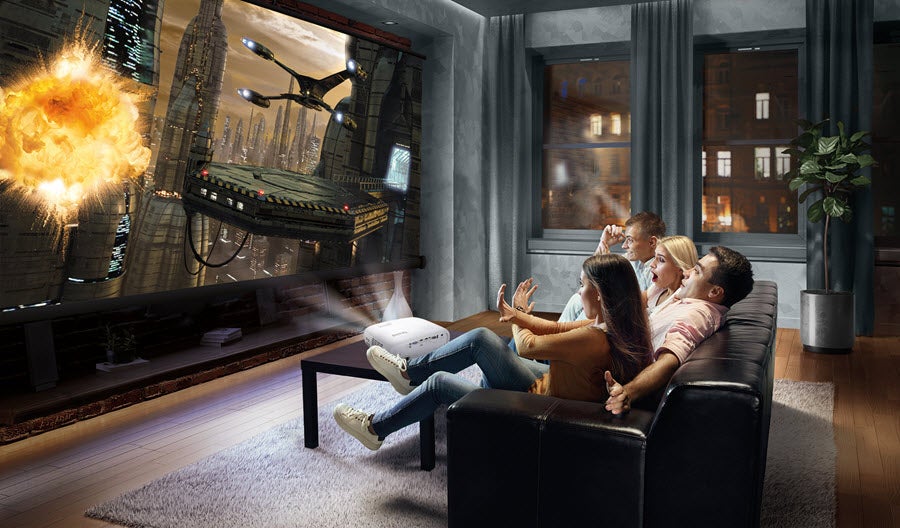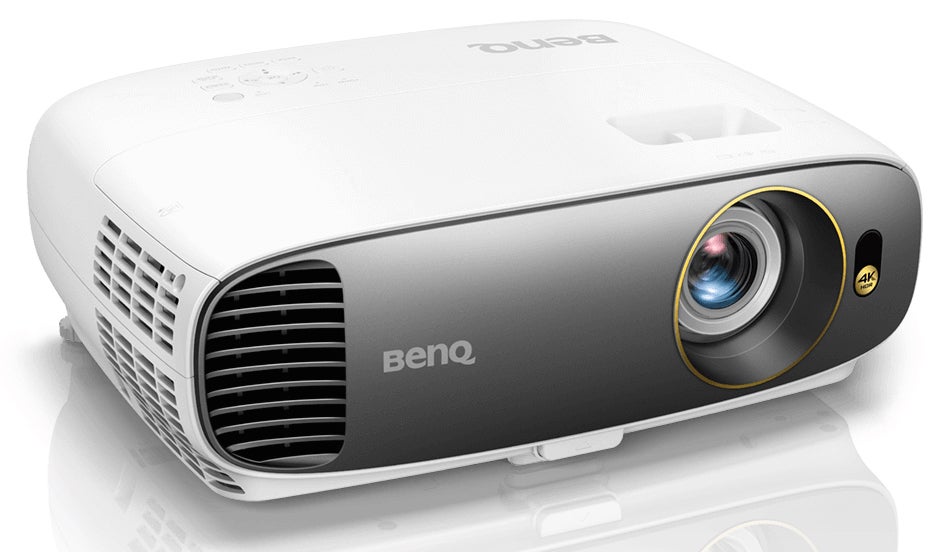BenQ W1700 Review
BenQ W1700
Enjoyable 4K HDR projection is finally affordable.
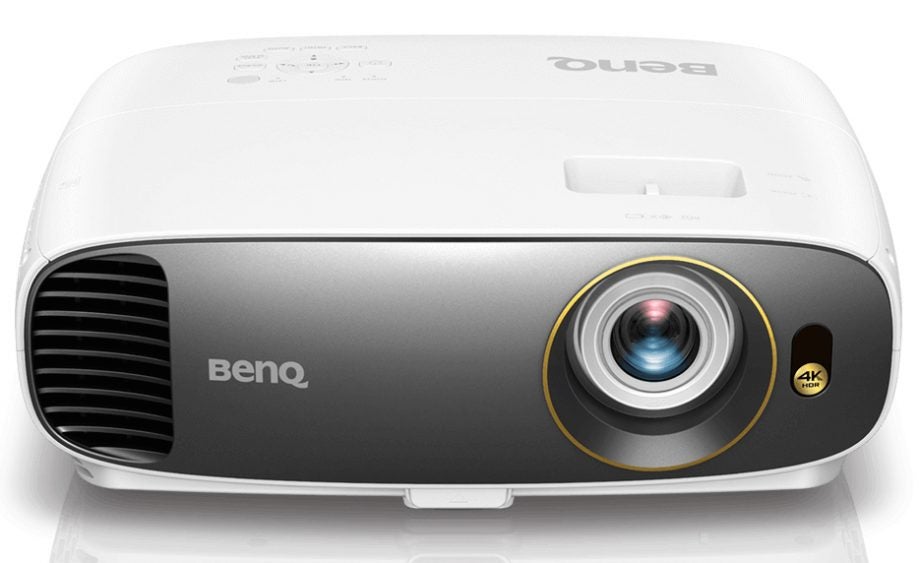
Verdict
Pros
- Crisp, sharp, detailed 4K playback
- Surprisingly bright with HDR sources
- Great value for what's on offer
Cons
- Black levels could be better
- Some colour issues with aggressive HDR content
- Some contrast issues with aggressive HDR content
Key Specifications
- Review Price: £1500
- '4K' DLP projector
- Support for the HDR10 HDR format
- Built-in 5W 'resonant chamber' speaker
- 2200 ANSI lumens claimed brightness
- BenQ's CinematicColor technology
What is the BenQ W1700?
The BenQ W1700 is the latest in a fast-growing line of affordable 4K projectors. Despite also claiming support for high dynamic range (HDR) playback, it costs just £1500. This price looks even better when it transpires that in many ways the W1700 is genuinely talented.
BenQ W1700 – Design and build
The BenQ W1700 is unusually small for a 4K projector. Its W353 x H135 x D272mm form makes it slightly bigger than BenQ’s typical HD projectors, but it’s still unusually coffee-table friendly by 4K projector standards.
It also tracks BenQ’s usual design theme of white bodywork and rounded edges and corners. The result is a projector that can happily live in a living room rather than a dedicated movie cave. That said, it deserves the respect of being placed in a blacked-out room and partnered with a decent-quality screen.
The projector feels reassuringly heavy for such an affordable machine, and its finish doesn’t feel excessively plasticky or lightweight.
The BenQ W1700 ships with an excellent remote. It’s a comfortable size and features a thoughtful button layout. It’s brightly backlit, too, so you can still use it easily in a dark room.
Related: Best projectors
BenQ W1700 – Features
The W1700 is fairly well connected for its money. It sports two HDMIs, one compatible with the 4K-friendly HDCP 2.2 anti-piracy system. There’s also a 12V trigger port for firing up, say, a motorised screen, plus D-Sub PC and 3.5mm audio in/out.
The W1700 delivers its 4K playback using the common DLP approach of illuminating each of its sub-4K set of mirrors multiple times per frame, to deliver a 4K effect. Arguments rage over whether this is truly 4K – although America’s Consumer Technology Association (CTA) says it is. What’s undeniable is that 4K DLP solutions have generally so far delivered crisper, cleaner results than rival ‘pseudo’ 4K solutions.
DLP’s single-chip approach also means there aren’t any of the sharpness-reducing, noise-causing convergence issues you can get with three-chip rival projection systems.
Surprisingly for £1500, the BenQ W1700 also uses a lens with a low-dispersion coating, to further reduce colour errors.
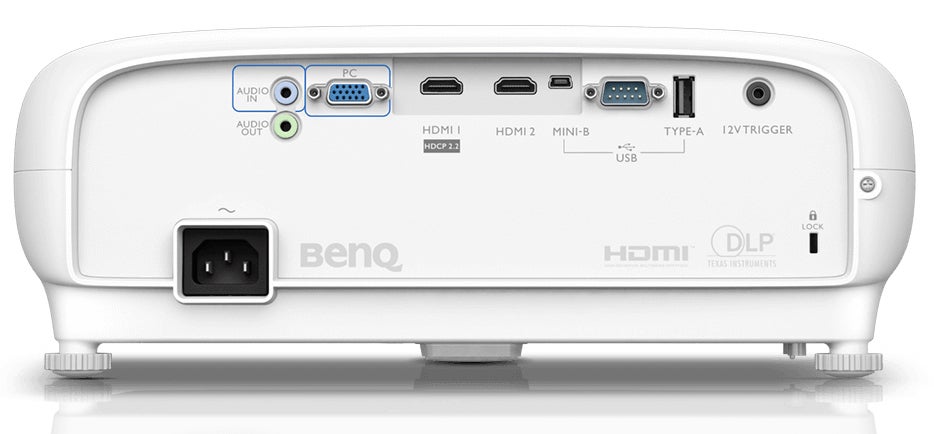
The W1700 supports HDR10, the industry standard HDR platform, delivered from a 2200 lumens maximum lamp output and a claimed contrast ratio of 10,000:1.
Projectors traditionally struggle with HDR, due to a lack of both brightness and colour range. However, the W1700 boasts a couple of intriguing HDR-related features.
First, an ‘Auto HDR Natural Color Rendition’ system claims to compensate for the oversaturated greens and reds often associated with HDR on projectors. The result, says BenQ, is a ‘perfectly lifelike colour performance automatically tuned to reflect nature’.
BenQ has also tried to tackle HDR projection’s common issues of crushed shadow detail in dark HDR areas. A so-called Cinema-Optimized HDR Performance claims to retain greyscale accuracy and balance dark colour saturations more effectively to keep dark details high.
This latter technology is also claimed to deliver more punch in bright areas than you’d usually see with projectors.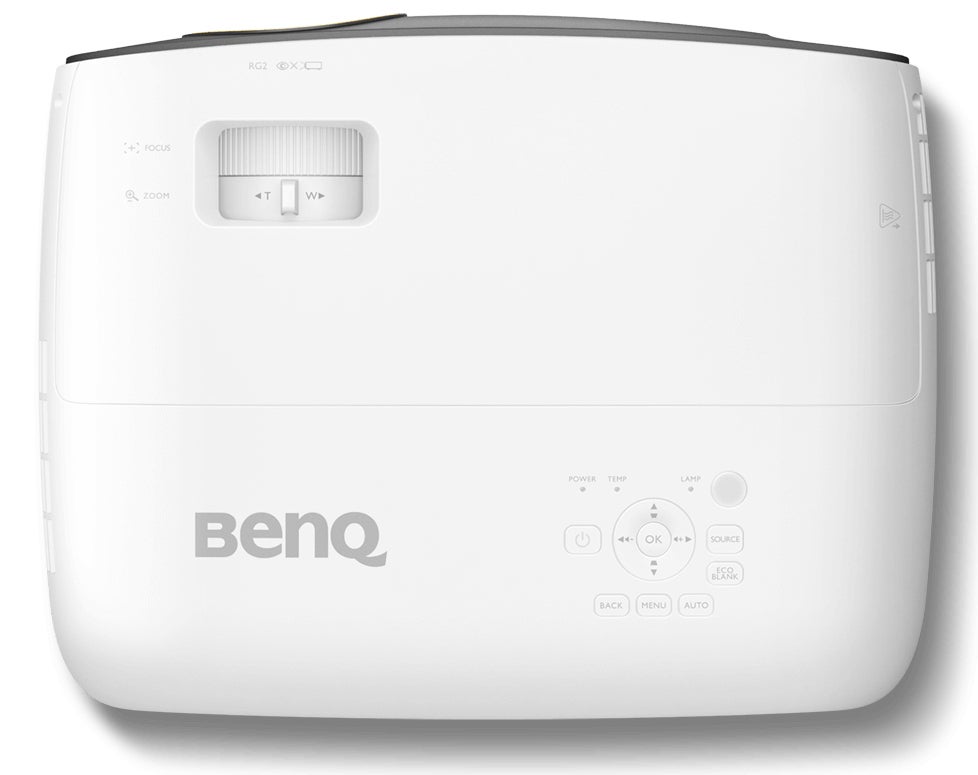
Some of this sounds a little vague, and hints at some manipulation of the native HDR image. For once, though, I actually wouldn’t have a problem with BenQ essentially reworking HDR to suit its projector. Experience suggests it’s the only way to get an HDR technology designed for TVs to remain engaging on an affordable projector.
Non-HDR viewing, meanwhile, should benefit from BenQ’s CinematicColor technology. This uses a combination of light waveform analysis, light leakage suppression and a special coating on the RGBRGB DLP colour wheel to deliver colours that are close to the standard dynamic range Rec 709 standard right out of the box. Although the projector does also support calibration by ISF engineers.
More controversial is BenQ’s CinemaMaster Video+ technology. This is essentially a selection of picture enhancement processors focused on sharpness, colour and skin tones. I don’t really think they’re needed, though. In fact, using any of them on fairly high settings can make pictures look worse.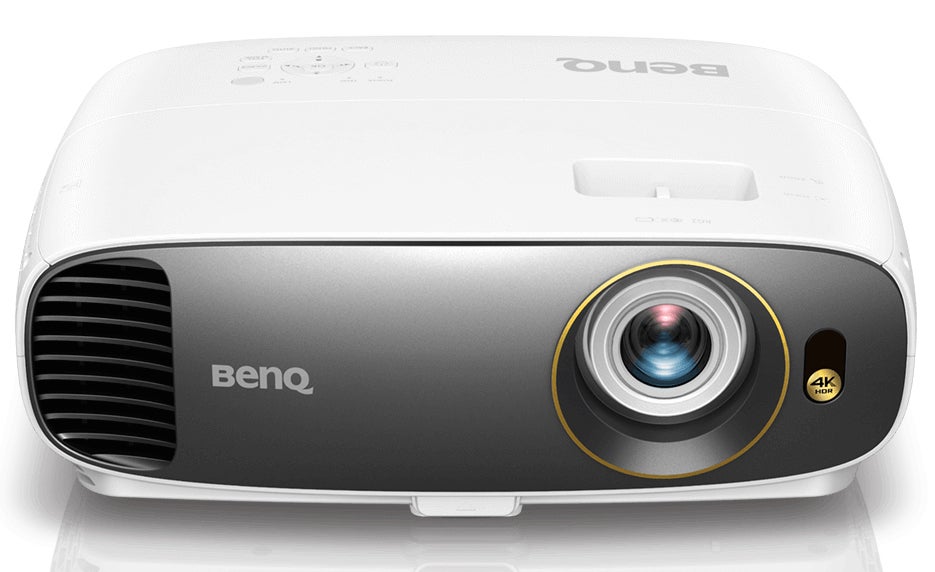
The BenQ W1700 can handle 3D if you buy the necessary 3D glasses (none were provided for this review).
One last picture-related feature is an impressive claimed maximum lamp life of 15,000 hours. Using the Smart Eco lamp mode, lamp life drops to 8000 hours – but that’s still very good.
Usually, I’d only need to cover picture features when reviewing a projector. However, the W1700 also houses a strikingly powerful 5W speaker within a ‘resonant sound chamber’ housing. There are even a selection of EQ algorithms to adjust the sound to different content types (sport, games, movies for example).
BenQ W1700 – Setup
You need to take a little care when setting up the W1700. In particular, ensure the projector’s brightness setting is at its neutral mid-point for HDR viewing. Set it higher and the picture looks washed out; set it lower and dark areas tend to look short of detail and ‘silhouettey’.
The Pixel Enhancer 4K feature also causes the picture to become excessively noisy if used any higher than its ‘4’ setting.
With both HDR and standard dynamic range content, I’d suggest setting the lamp to SmartEco. This dynamic contrast feature optimises contrast without seemingly causing any distracting brightness ‘jumps’ or lamp flickering.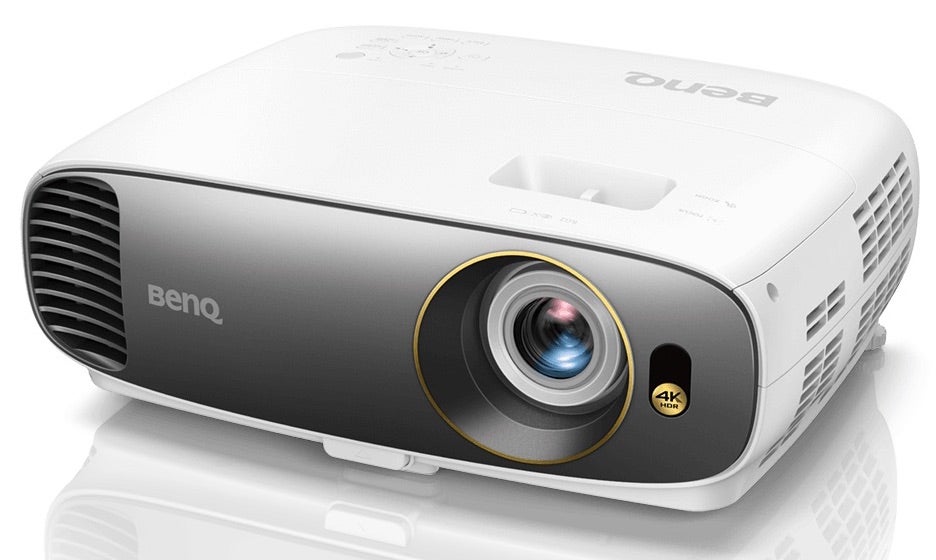
One of the trickiest decisions is between using the default Vivid TV setting with HDR, or the projector’s Cinema preset. The Vivid mode delivers the most punchy, dynamic and – in many ways – satisfying HDR image. The Cinema mode looks less ‘HDR’, but delivers greater detail in bright areas and more natural out-of-the-box colours.
Unfortunately, there isn’t an absolutely ideal setup. However, both the Vivid TV and Cinema modes can be improved by the projector’s strong colour calibration tools.
When it comes to physical setup, the BenQ W1700 is okay rather than brilliant. The 1.2x optical zoom is passable rather than great, and there’s no optical image shifting – vertical or horizontal. This means many users will have to essentially distort the image with keystone adjustment to get its edges perpendicular. Just as well then that the W1700 carries a decent auto keystone system.
BenQ W1700 – Performance
Pushed hard right away with 4K HDR playback from 4K Blu-ray, the BenQ W1700 gets off to a strong start by being impressively bright. Much brighter than many more expensive 4K rivals.
This helps it produce engagingly punchy peak brightness with HDR content. Even better, the W1700 also manages to maintain a higher baseline level of brightness with HDR content than your typical projector. This immediately makes HDR images look consistently more believable and lifelike – exactly what HDR is all about.
The extra brightness delivers a much more pronounced difference between HDR and SDR than you often get with projectors.
The W1700’s pictures also look 4K – not quite as pristinely sharp and detailed as those of Sony’s native 4K SXRD projectors, but comfortably beyond HD. Sharpness and precision is good enough, too, to enhance the sense of depth in 4K images.
Also contributing to the W1700’s excellent clarity is its impressive freedom from video noise. Provided you don’t go overboard with the Pixel Enhancer, there’s no excessive grain or edge noise. Nor is there any obvious green dotting noise in dark areas of the sort often seen with single-chip DLP projectors. Screen uniformity, in terms of colour and sharpness, is also strong.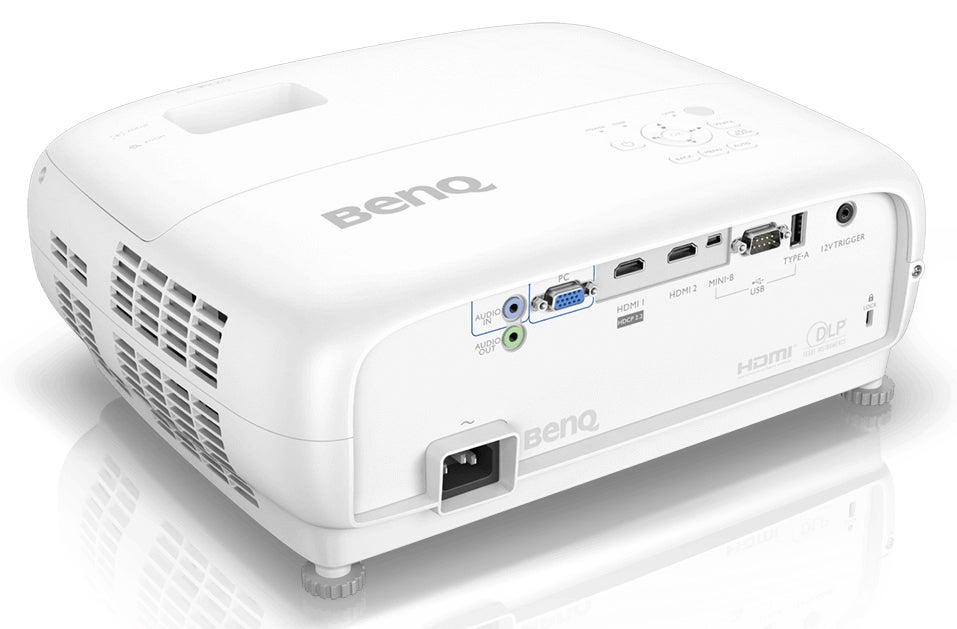
Motion is handled well. There’s no sign of the fizzing skin tones during camera pans that can on occasion be seen with single-chip DLP projectors. Judder looks natural with 24p content rather than excessive. And there’s no sense of blurring, or a drop in that lovely 4K-like resolution. The W1700’s 4K-capable HDMI proves capable of handling the 60fps 4K, HDR images of Billy Lynn’s Long Half-Time Walk, too.
The W1700 continues to look clean and punchy with standard dynamic range sources. This is important given that most home cinema fans still have much bigger Blu-ray than 4K Blu-ray libraries.
HD sources do look markedly softer than native 4K ones. This seems more an endorsement of the W1700’s ‘native 4K’ claims, though, than a sign of excessive weakness in the projector’s upscaling.
Colour is in the main another strength of the W1700. It handles the relatively limited tonal range of SDR footage effortlessly. Yet it also, impressively, delivers a genuine sense of expanded colour range with HDR/wide colour gamut footage. This is despite lacking an optional wide colour filter such as Epson’s TW9300.
So far, so good. But you likely won’t be too surprised to learn that £1500 doesn’t get you a flawless 4K HDR projector experience.
The biggest issue is black levels. Predictably, pushing for the sort of brightness HDR ideally needs, the W1700 exhibits more greyness during dark scenes than some other non-HDR BenQ projectors.
Thankfully, this doesn’t lead to any great loss of detail in dark areas of HDR pictures. Nor does the picture feel painfully short of contrast, and nor do colours look washed out. There’s no doubt, however, that the bright parts of mixed light and dark HDR shots look far more convincing than the dark parts. This can given pictures a slightly unbalanced feel. More full-on dark scenes also look less natural and full of depth than bright ones.
On occasion, colours can look rather strained in relatively extreme HDR content. This is especially true with 4K Blu-ray titles such as Pan, which have been mastered to a relatively aggressive 4000 nits of brightness. When using the default Vivid TV HDR setting, for instance, Black Beard’s red sash stands out from the rest of the image so much on the W1700 that it almost seems to glow.
As noted in the Setup section, hopes that this situation might be fixed by tweaking the projector’s HDR brightness setting prove unfounded. The only way to really tackle the image’s colour balance with aggressive HDR presentations is to shift to the Cinema preset. This also improves black levels slightly, and produces more subtle tonal detailing in the brightest HDR areas.
The Cinema preset has issues of its own, however. In particular, it doesn’t look as dynamic – as ‘HDR’ – as the Vivid TV preset. Colours can still look a touch ‘blown’ with 4000 nit content, too.
However, in the context of its £1500 price, the W1700 deserves for us to finish this section of the review on a high – or five!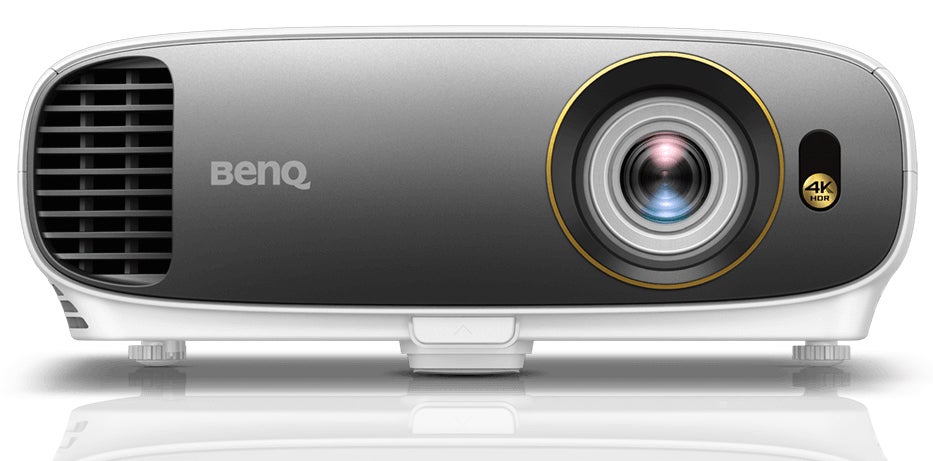
First, colours look much more natural with the 1000 nits or so peaks used for HDR by the majority of current HDR content. Second, the projector runs surprisingly quietly, even in HDR mode, if you’re using the Smart Eco lamp setting.
Third, the W1700’s built-in sound system is remarkably good. Although its sound inevitably appears physically dislocated from the onscreen action, it can go loud without distorting, makes dialogue sound convincing, and is seldom harsh.
Fourth, considering how bright it can get, the W1700 suffers impressively little with single-chip DLP’s rainbow effect, where stripes of colour flit around over bright highlights or in your peripheral vision.
Finally, despite not having a dedicated Game mode, the W1700 measures around 33ms of input lag (picture rendering delay). This is a respectable result for a home cinema projector, making it a feasible big-screen gaming display.
Why buy a BenQ W1700?
You can get more satisfying all-round HDR performances from rival projectors – provided you’re willing to spend significantly more. The £2999 Epson EH-TW9300 delivers a more balanced HDR image and an optional colour filter, although its pseudo 4K system doesn’t look as sharp. The £2000 Optoma UHD60’s extra brightness gives it an edge, too, despite its not so great black levels.
However, for £1500, the BenQ W1700 is simply way more of an all-rounder than you’ve any right to expect a ‘4K’ HDR projector to be.
Verdict
Although not entirely compromise-free, the W1700 is actually more watchable with 4K HDR sources than many costlier rivals. As a result, it’s a great entry point into the next generation of home cinema.

